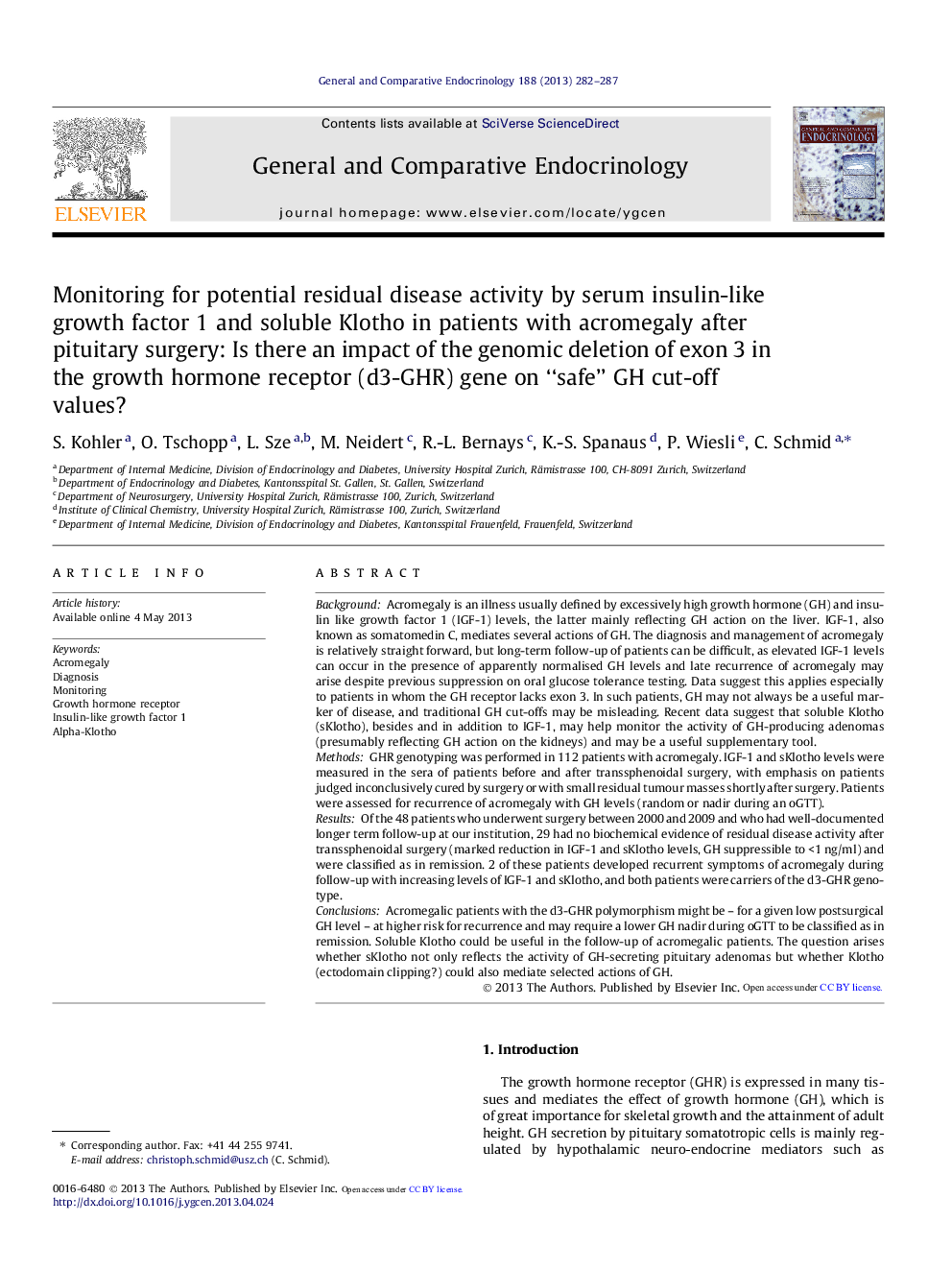| کد مقاله | کد نشریه | سال انتشار | مقاله انگلیسی | نسخه تمام متن |
|---|---|---|---|---|
| 5901397 | 1568917 | 2013 | 6 صفحه PDF | دانلود رایگان |

- The d3-GHR displays a greater response to GH stimulation.
- For biochemical cure, acromegalic patients with d3-GHR need especially low GH values.
- Klotho is a multifunctional protein regulating calcium and phosphate homoeostasis.
- Klotho reflects activity of acromegaly and may serve to monitor disease activity.
- We present our experience and illustrate selected cases with d3-GHR and sKlotho.
BackgroundAcromegaly is an illness usually defined by excessively high growth hormone (GH) and insulin like growth factor 1 (IGF-1) levels, the latter mainly reflecting GH action on the liver. IGF-1, also known as somatomedin C, mediates several actions of GH. The diagnosis and management of acromegaly is relatively straight forward, but long-term follow-up of patients can be difficult, as elevated IGF-1 levels can occur in the presence of apparently normalised GH levels and late recurrence of acromegaly may arise despite previous suppression on oral glucose tolerance testing. Data suggest this applies especially to patients in whom the GH receptor lacks exon 3. In such patients, GH may not always be a useful marker of disease, and traditional GH cut-offs may be misleading. Recent data suggest that soluble Klotho (sKlotho), besides and in addition to IGF-1, may help monitor the activity of GH-producing adenomas (presumably reflecting GH action on the kidneys) and may be a useful supplementary tool.MethodsGHR genotyping was performed in 112 patients with acromegaly. IGF-1 and sKlotho levels were measured in the sera of patients before and after transsphenoidal surgery, with emphasis on patients judged inconclusively cured by surgery or with small residual tumour masses shortly after surgery. Patients were assessed for recurrence of acromegaly with GH levels (random or nadir during an oGTT).ResultsOf the 48 patients who underwent surgery between 2000 and 2009 and who had well-documented longer term follow-up at our institution, 29 had no biochemical evidence of residual disease activity after transsphenoidal surgery (marked reduction in IGF-1 and sKlotho levels, GH suppressible to <1Â ng/ml) and were classified as in remission. 2 of these patients developed recurrent symptoms of acromegaly during follow-up with increasing levels of IGF-1 and sKlotho, and both patients were carriers of the d3-GHR genotype.ConclusionsAcromegalic patients with the d3-GHR polymorphism might be - for a given low postsurgical GH level - at higher risk for recurrence and may require a lower GH nadir during oGTT to be classified as in remission. Soluble Klotho could be useful in the follow-up of acromegalic patients. The question arises whether sKlotho not only reflects the activity of GH-secreting pituitary adenomas but whether Klotho (ectodomain clipping?) could also mediate selected actions of GH.
Journal: General and Comparative Endocrinology - Volume 188, 1 July 2013, Pages 282-287